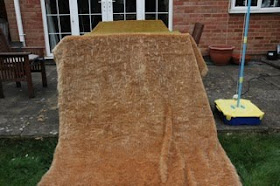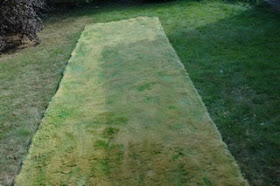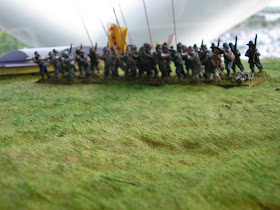
I started by trimming the fur to a more manageable length. I found that for a length this long (it turns out to be 5.5 metres long; something went wrong with the conversion from imperial to metric!) two sessions of about an hour each was sufficient.







Once trimmed you start building up the colour. The important thing is to not be too dark or too thick with the pain;t you want to stain the fur green and not clog it up.
I used about three shades of green building it up in layers.




Once done the fur is quite damp so its best to do it it on a sunny day when you can use the heat of the sun to dry it. I just lay it on the lawn. On a sunny day it dries in about an hour.


Then touch up with some more layers to make it look natural. Trim any remaining tufts and leave to dry again.
In all for a mat of that size it was about 5 hours on and off to complete it.



Because I base my troops on quite large bases I have left the grass quite long and the figures still stand on it. Smaller bases you probably want to trim it lower to ensure they are stable..
































